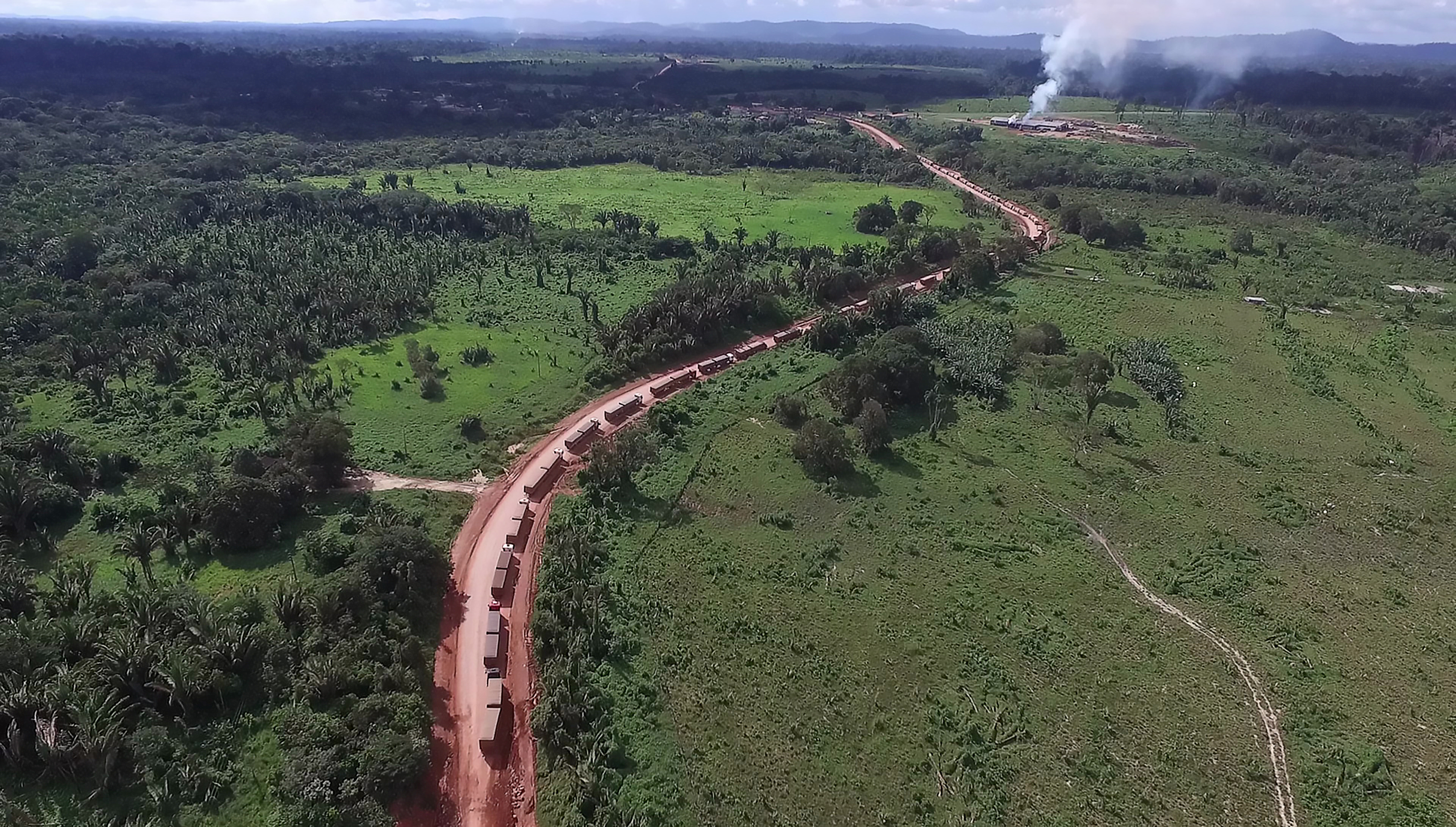5. Pressures and threats
Lalo de Almeida, 2018.
Amazonia is not isolated from the impact of infrastructure and extractive industry mega-projects, such as highway and road construction, building of hydroelectric plants, and mining and oil concessions. What are the real dimensions of projects already underway and those being planned?
More than half the units of analysis in Amazonia (65,8%) are subject to some type of fixed or ongoing pressure: whether extractive activities such as oil and mineral exploitation, development of road infrastructure, agricultural activity, or the presence of hydroelectric plants. The areas with the highest pressure are located in the peripheral areas of the biome: in areas of mountains and foothills located to the west, especially in Ecuador; in northern Venezuela; and, to the south, in Brasil.
From a regional perspective, most of the Amazon territory in all the countries is under some sort of pressure, with a prevalence of moderate and high indices. Ecuador is seen to be the most dramatic case, with 88% of its Amazonian territory affected by some type of pressure, with 18% classified as “high” and 45% as “very high”, totalling 63%.
From a regional perspective, most of the Amazon territory in all the countries is under some sort of pressure, with a prevalence of moderate and high indices. Ecuador is seen to be the most dramatic case, with 88% of its Amazonian territory affected by some type of pressure, with 18% classified as “high” and 45% as “very high”, totalling 63%.

Queue of trucks on the BR-163 highway in Pará, Brasil. Daniel Paranayba / ISA, 2017.
Some type of threat hangs over 27% of Amazonia. Almost all the countries in the region have some part of their Amazon territory threatened by infrastructure projects (roads or hydroelectric plants) or extractive activities (mining or oil).
Perú stands out as the country with the largest portion of its Amazon region threatened (42%), registering "very high" rates of threats from both road development and hydroelectric projects, as well as from oil exploitation .
In the case of Brasil and Venezuela (27% and 18% of territory under threat, respectively), hydroelectric and mining projects are threats that also fall into the “very high” category, while mineral extraction is also a threat in other countries of the region, although in the “very low” category.
Bolivia reflects an extensive area of interest mainly in hydrocarbons, followed by mining and hydroelectric plants. In 15% of the territory the threat is “medium to very high”. Colombia does not show "very high" threats; however, the possibility of mining and oil exploitation remains in its Amazonian territory.
